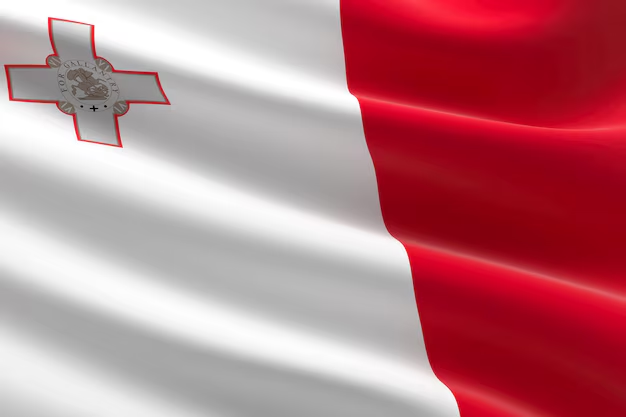When the world around talks about Malta payment rails, they’re talking about the hidden systems that move money between banks, merchants, and people. Malta is a small island nation, but it is part of the European Union, which means its payments are connected to wider European rails, making it surprisingly advanced when it comes to moving money. The three main systems are SEPA payments in Malta, Malta mobile wallets, and the Malta banking system. Altogether, they support both everyday use cases like paying in a local shop or sending money to a friend or client, and international trade.
Here’s the thing: Malta's digital payments are expanding rapidly. But people are still using cash, even though card payments, online payments, and mobile banking in Malta are rising. Young customers are driving the growth of mobile wallets in Malta, while EU regulations are pushing banks to adopt instant payments in Malta for faster transfers. Add to this the strength of the Malta fintech ecosystem, and this blog will paint a picture of a country where financial services are evolving quickly.
Malta Payment Rails
Malta payment rails are the backbone of all the networks that let money move between banks, businesses, and people. As a member of the European Union, Malta benefits from SEPA Malta, which makes euro transfers across 30+ European countries fast, secure, and affordable. The Malta banking system ensures compliance and financial stability. But cross-border payments in Malta often go through multiple intermediaries, creating delays, high FX costs, and compliance challenges.
This is where TransFi can make a real difference. By offering enterprise-grade security, the lowest processing fees, the best FX rates, and AI-powered smart routing, TransFi turns Malta payment rails into a global advantage. Instead of relying on slow, expensive correspondent banking, businesses in Malta can now access anything through a single platform.
SEPA Payments Malta
The crucial part of Malta's payment rails is SEPA, the Single Euro Payment Area. Since Malta is part of the eurozone, SEPA payments in Malta make sending money across 36 European countries as easy as a domestic transfer. Whether it’s paying salaries, settling bills, or conducting trade, SEPA transfers Malta provide a trusted, low-cost rail.
Now, here’s where things start to get interesting: SEPA and instant transfers in Malta are becoming the new norm. With SEPA Instant, payments of up to €100,000 can move across borders in under 10 seconds, available 24/7. Adoption of instant payments in Malta is growing, and EU regulations will soon require most banks to support this feature.
The main catch is that SEPA only works in euros. If you’re a Maltese business trading in dollars, pounds, or digital assets, SEPA won’t solve that problem. That’s why companies turn to TransFi. Instead of being locked into euro-only rails, TransFi connects SEPA payments in Malta with the world’s networks. For businesses, this means global reach with local reliability.
Malta Mobile Wallets
The increase of mobile wallets in Malta has revolutionized how people pay, particularly for younger generations who prefer smartphones over physical cards. Malta mobile wallets like Apple Pay, Google Pay, and Revolut are globally used, often linked to the Malta banking system or to debit and credit cards.
Mobile banking is another factor in Malta’s case. Many banks now let customers send money instantly through their apps, blending mobile convenience with the reliability of the Malta payment rails underneath. But not all merchants in Malta accept mobile wallets, and fragmentation means users sometimes juggle different apps. Businesses also face challenges in integrating multiple wallet systems with their operations.
That’s where TransFi adds value. By connecting Malta mobile wallets, SEPA payments Malta, and other rails into one international platform, TransFi guarantees that every transaction is executed with speed, precision, and the lowest possible fee.
Also read about: Germany’s Payment Rails & How They Work – SEPA, Girocard, Sofort & Instant Payments.
Malta Banking System
Despite being a small country, Malta is home to both local and international banks, all operating under strict EU regulations. This gives stability and trust, which is why most citizens and businesses depend on banks for everyday transactions.
The Malta banking system supports cards, SEPA, and digital transfers. It is also adapting to instant payment in Malta, though adoption is slower compared to bigger EU economies. Banks are careful, but the demand for speed is pushing them forward.
TransFi integrates with the Malta banking system and makes instant, global, and cost-efficient cross-border payments possible. For businesses in Malta, this means moving beyond the limits of SEPA and connecting to 100+ countries with precision and safety.
Malta Digital Payments
The Malta fintech ecosystem has become a main asset of payment innovation. Startups and established players alike are experimenting with various new ways to make Malta's digital payments faster, safer, and more global.
Innovation is happening across three main areas. First, the growth of mobile wallets in Malta, where contactless card payments in Malta and online payments in Malta are increasingly tied to smartphone apps. Then comes instant payments in Malta which are forcing banks to allow 24/7 euro transfers within seconds. Third, the mixing of fintech with banking, where APIs allow smoother connections between traditional banks and new platforms.
Still, disintegration gives headaches. Businesses mostly have to manage SEPA payments, Malta mobile wallets, and cross-border payments individually. That’s why TransFi stands out from the crowd. It unifies local rails with global payments, offering AI-powered smart routing that checks out the fastest and most cost-effective method every time. Basically, TransFi acts as the missing connection between local systems and international growth.
Conclusion
To sum it up, Malta’s payment rails work with three pillars: SEPA payments, Malta mobile wallets, and the Malta banking system. Altogether, they power Malta's digital payments, from daily shopping with card payments in Malta to e-commerce with online payments in Malta. Innovation is increasing, fueled by the Malta fintech ecosystem, the rise of mobile wallets in Malta, and the adoption of instant payments in Malta.
But challenges remain as SEPA is limited to euros, banks can be slow with global transfers, and fragmentation between wallets, cards, and digital banking creates inefficiencies. Businesses need a smarter, more efficient way to unify all these rails without friction.
That's exactly what TransFi offers by connecting 40+ currencies, 80+ digital assets, 250+ local payment methods, and 100+ countries. TransFi reshapes digital banking services in Malta into a gateway to international trade. If you are an individual or business looking forward to tapping into Malta’s market, talk to an expert at TransFi today to experience truly borderless finance.
FAQs
- How do Malta's payment rails work?
In Malta, payments create a fast, secure way for businesses and consumers throughout Europe to make cross-border and local transactions. They flow mainly through SEPA for euro transfers, mobile wallets for everyday spending, and the banking system for cards and online transactions.
- What are SEPA and instant transfers in Malta?
SEPA makes it cheap and straightforward to send euros around Europe for businesses and individuals. Additionally, with instant payment adoption increasing steadily among Maltese banks, these allow you to receive money within 10 seconds, anytime.
- What is leading to the growth of mobile wallets in Malta?
Convenience, speed, and cost are driving the growth of mobile wallets in Malta. Mobile wallets are achieving popularity in Malta, with younger users switching to Apple Pay, Revolut, and bank-linked apps for shopping and transfers. They’re changing the way people handle card payments, online checkouts, and even instant payments all over the island.
- What are the digital banking services in Malta?
Banks merge these with SEPA and wallets, providing customers with flexible ways to pay, send, and receive money both locally and across Europe. Digital banking services in Malta give access to online payments, mobile banking apps, instant transfers, and card management, among others.
- What is the Malta fintech and payment innovation ecosystem ?
The ecosystem is a mix of banks, startups, and EU regulation working together to build secure digital solutions and to help businesses move beyond traditional banking rails into faster, smarter payments. Malta’s fintech scene is centered on mobile wallets, instant payments, and cross-border connectivity.
Table of Contents
Suggested Article
Explore our products

Make global payments at the speed of a click

Accept payments, remove borders.

Unlock Seamless Digital Currency Transactions Anywhere








.png)














